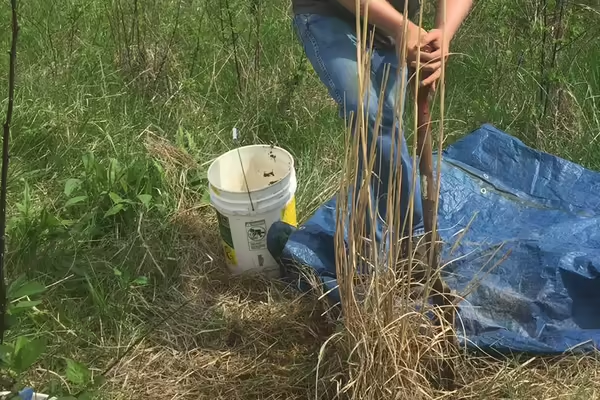
URBANA, Ill. – Plants are designed to travel. They might not stand up and walk, but many plants produce seeds or other bits that can be carried long distances by wind or animals and start growing. While that might be great news for the plant, escapes like these can disrupt natural ecosystems and be costly to remove.
But just how costly?
According to University of Illinois agricultural ecologist Adam Davis, many cost estimates for cleaning up unwanted, invasive plants are just that: estimates, extrapolated via desktop analysis from relatively scant data. Unsatisfied with that, Davis suffered hornet attacks and years of backbreaking labor to arrive at real dollars and cents associated with removal of escaped Miscanthus plants.
“The last couple years, I would spend a week in late September digging 3 feet down to recover Miscanthus giganteus rhizomes. And getting poison ivy, and getting pelted by this crazy group of black, bald-faced hornets. It was kind of hazardous research, and frankly, it’s still not fully eradicated,” says Davis, professor and head of the Department of Crop Sciences at Illinois and senior author on a recent study in Invasive Plant Science and Management.
Land managers and plant ecologists everywhere can relate.
Davis and his research team intentionally planted controlled invasions of Miscanthus giganteus and Miscanthus sinensis in six floodplain and old-field locations across Illinois to simulate potential escapes from bioenergy plantations and horticultural plantings. When it was time to clean up, they kept track of what they spent on herbicides, equipment, travel, and personnel hours: between $85 and $3,316 per site.
That range reflects differences between sites, species, and the sheer tenacity of some individual plants.
Miscanthus is not currently being scaled up for bioenergy plantations, as promised a decade ago. But the invasion potential is still strong, given the genus is still heavily marketed through the horticultural industry. Furthermore, Davis points out with increasing fossil fuel costs, bioenergy may start looking more attractive again in the not-too-distant future.
The article, “Estimating local eradication costs for invasive Miscanthus populations throughout the Eastern and Midwestern United States,” is published in Invasive Plant Science and Management [DOI: 10.1017/inp.2022.20]. Authors include Carolyn Lowry, David Matlaga, Natalie West, Martin Williams, and Adam Davis. The research was supported by USDA’s National Institute of Food and Agriculture and USDA-ARS.